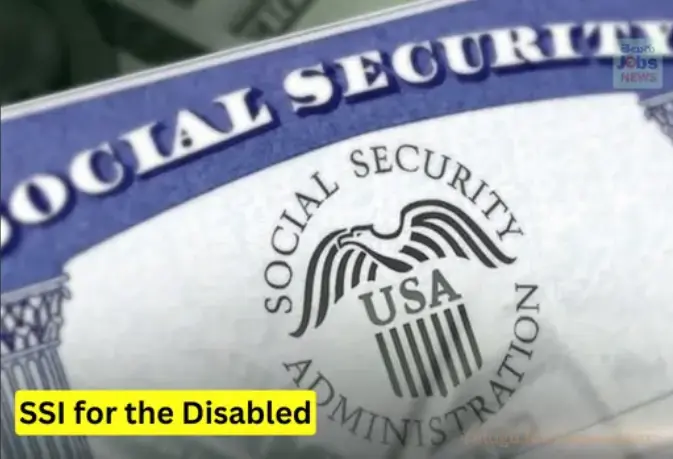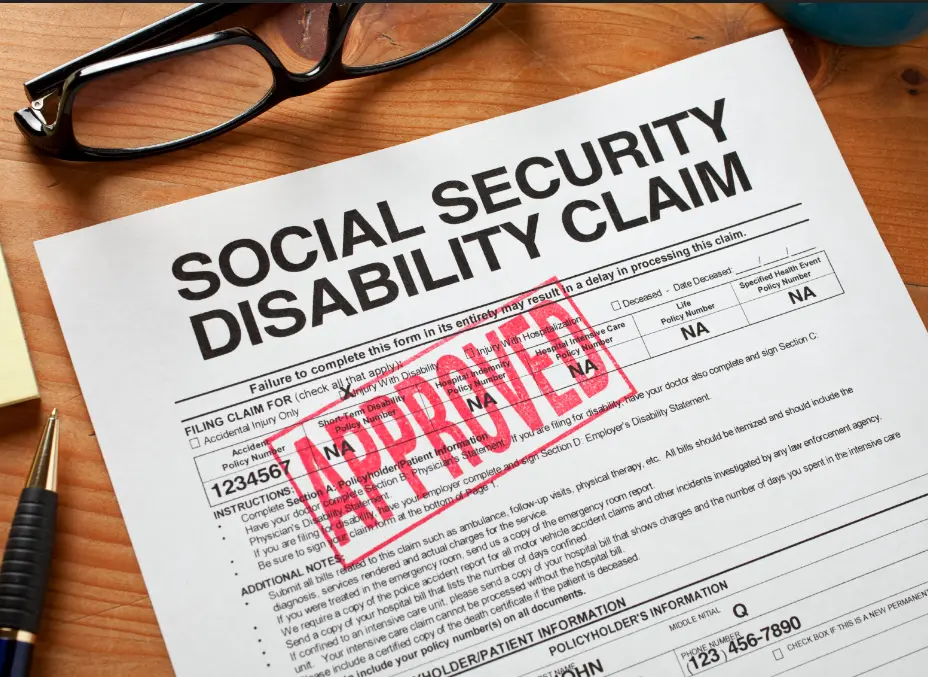Scoliosis is a condition characterized by an abnormal curvature of the spine, often diagnosed during adolescence but affecting people of all ages. This condition can lead to physical discomfort, limited mobility, and even psychological distress. Living with scoliosis may impact an individual’s ability to perform daily tasks, engage in physical activities, and maintain consistent employment. This article explores the criteria and steps for determining if scoliosis qualifies as a disability under Supplemental Security Income (SSI) and how individuals can navigate the application process.
Understanding Supplemental Security Income (SSI) and Its Purpose
What is SSI?Can You Get SSI for Scoliosis?
Supplemental Security Income (SSI) is a federal program administered by the Social Security Administration (SSA) that provides financial assistance to individuals with disabilities who have limited income and resources. Unlike Social Security Disability Insurance (SSDI), which is based on work history, SSI is need-based and designed to help individuals cover basic living expenses such as food, shelter, and medical care .

SSI Eligibility Criteria for Individuals with Scoliosis
Medical Diagnosis and Financial Requirements
To qualify for SSI benefits due to scoliosis, applicants must meet specific criteria set by the SSA. First, scoliosis must be a medically determinable impairment that significantly limits the individual’s ability to work. The condition must be expected to last for at least 12 months or result in death. Additionally, applicants must meet financial requirements related to income and resources, with strict limits on assets and earnings .
Assessing the Severity of Scoliosis: Medical Documentation and Evaluations
Importance of Comprehensive Medical Evidence
When applying for SSI benefits, comprehensive medical documentation is crucial. This includes X-rays, MRI scans, and medical reports that clearly outline the severity of scoliosis. The SSA evaluates this evidence to determine the functional limitations caused by the condition and how it impacts the individual’s capacity to work. Providing detailed assessments from healthcare providers strengthens the case for SSI eligibility .
How Scoliosis Can Impact Your Ability to Work
Functional and Psychological Challenges
Scoliosis can significantly affect an individual’s ability to work. Physical limitations such as chronic pain, reduced mobility, and fatigue can make it difficult to perform jobs that require prolonged sitting, standing, or physical exertion. Additionally, the psychological effects of scoliosis, including anxiety, depression, and reduced concentration, can further hinder job performance and employability .
Financial Requirements for SSI Eligibility
Income and Resource Limits
To be eligible for SSI benefits, applicants must meet financial requirements set by the SSA. Income includes wages, self-employment earnings, and other sources of financial support. The SSA imposes income limits that vary depending on the state of residence. Resource limits, which include assets like cash, bank accounts, and property, are capped at $2,000 for individuals and $3,000 for couples .
Applying for SSI Benefits: Step-by-Step Guide

Navigating the Application Process
The SSI application process can be complex and lengthy. Applicants must complete detailed forms and provide supporting documentation that demonstrates both medical need and financial eligibility. Working with a disability advocate or attorney is highly recommended, as they can guide applicants through the process and improve the likelihood of approval. Applications can be submitted online, by phone, or in person at a local Social Security office .
Common Challenges and Misconceptions in SSI Applications for Scoliosis
Overcoming Barriers to Approval
One common challenge in SSI applications for scoliosis is the misconception that scoliosis is not a disabling condition. Without proper medical evidence and documentation, claims may be denied due to a lack of understanding regarding the condition’s impact on daily life. Educating the SSA on the severity of scoliosis through comprehensive medical records and expert testimony is key to overcoming these challenges .
Gathering Supporting Evidence: Medical Records and Treatment History
Building a Strong Case
When applying for SSI benefits, gathering detailed medical records and treatment histories is essential. Documentation should include diagnostic tests, treatment plans, and records of any surgeries or ongoing therapies. Test results like X-rays or MRIs are particularly valuable in illustrating the extent of spinal curvature. Ensuring that all relevant medical evidence is submitted can significantly improve the chances of a successful application .
The Role of Vocational Experts in SSI Applications for Scoliosis
Assessing Work Capacity
Vocational experts are often involved in SSI applications to assess an individual’s ability to work based on their medical condition. These experts evaluate how scoliosis affects job performance and whether there are suitable job opportunities available given the individual’s limitations. Their assessments play a critical role in determining whether an applicant qualifies for SSI benefits .
Understanding the Appeals Process for Denied SSI Claims
Steps to Take After a Denial
In many cases, initial SSI claims are denied. However, applicants have the right to appeal. The appeals process includes several stages: reconsideration, a hearing before an administrative law judge, and, if necessary, appeals to the Appeals Council or federal court. Understanding each stage, gathering additional evidence, and seeking legal advice can greatly increase the chances of a successful appeal .

Additional Resources and Support for Individuals with Scoliosis Seeking SSI Benefits
Accessing Help and Guidance
There are numerous resources available to help individuals with scoliosis navigate the SSI application process. Local disability advocacy organizations can provide guidance, while support groups offer emotional and practical support. Utilizing these resources ensures that applicants have the information and assistance needed to build a strong case for SSI benefits .
Schlussfolgerung
Scoliosis can qualify as a disability under SSI if it meets the SSA’s criteria for medical severity and financial need. A successful application relies on comprehensive medical documentation, clear evidence of functional limitations, and adherence to the financial requirements. Seeking help from disability advocates and gathering robust supporting evidence are critical steps in ensuring a successful SSI claim. By understanding the application process and accessing available resources, individuals with scoliosis can secure the financial support they need to maintain a better quality of life.
Referenzen
- Tsirikos AI, Jain AK, DeVito DP. "Kongenitale Skoliose: Diagnosis, Treatment, and Outcomes". Zeitschrift der American Academy of Orthopaedic Surgeons. 2012;20(3):150-159. doi: 10.5435/JAAOS-20-03-150.
- Negrini S, Donzelli S, Aulisa AG, et al. "2016 SOSORT Guidelines: Orthopädische und rehabilitative Behandlung der idiopathischen Skoliose während des Wachstums." Skoliose und Wirbelsäulenbeschwerden. 2018;13:3. doi: 10.1186/s13013-017-0145-8.
- Glassman SD, Bridwell K, Dimar JR, Horton W, Berven S, Schwab F. "The Impact of Positive Sagittal Balance in Adult Spinal Deformity". Wirbelsäule. 2005;30(18):2024-2029. doi: 10.1097/01.brs.0000179086.30449.96.
- Schreiber S, Parent EC, Moez EK, et al. "The Effect of Schroth Exercises on the Quality of Life and Muscle Endurance in Adolescents with Idiopathic Scoliosis-An Assessor and Statistician-Blinded Randomized Controlled Trial". PLOS ONE. 2015 Jul 7;10(7). doi: 10.1371/journal.pone.0135875.
- Romano M, Negrini S, Villafañe JH. "Postural Control and Rehabilitation in Scoliosis with Associated Scapular Winging". Europäische Wirbelsäulenzeitschrift. 2021;30(3):519-528. doi: 10.1007/s00586-020-06675-3.
- Wang X, Liu Z, Li Z, et al. "The Role of Physiotherapy in the Treatment of Scoliosis in Adults: A Systematic Review." Journal of Orthopaedic Research. 2022;40(3):345-352. doi: 10.1002/jor.25039.
- Bunnell WP. "Der natürliche Verlauf der idiopathischen Skoliose vor der Skelettreife". Wirbelsäule. 1986;11(8):773-776. doi: 10.1097/00007632-198611000-00005.
- Cahill PJ, Pahys JM, Asghar J, et al. "Vertebral Body Tethering for Idiopathic Scoliosis: Early Outcomes from an FDA Investigational Device Exemption Study". Wirbelsäulendeformität. 2020;8(3):391-399. doi: 10.1007/s43390-020-00131-9.
- Miyanji F, Newton PO, Samdani AF, et al. "Safety and Efficacy of Vertebral Body Tethering for the Treatment of Idiopathic Scoliosis". Zeitschrift für pädiatrische Orthopädie. 2020;40(6). doi: 10.1097/BPO.0000000000001525.

